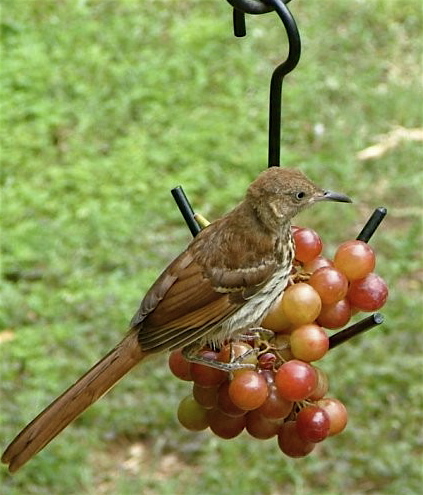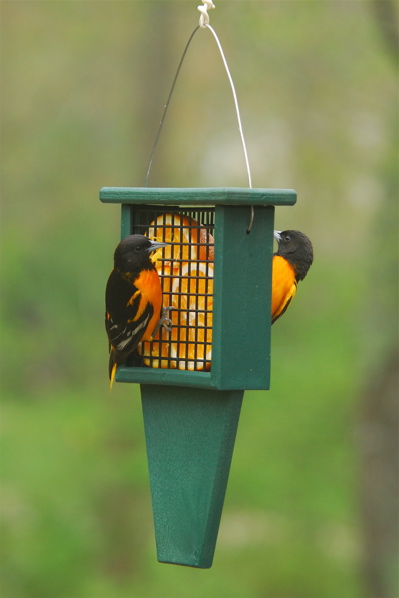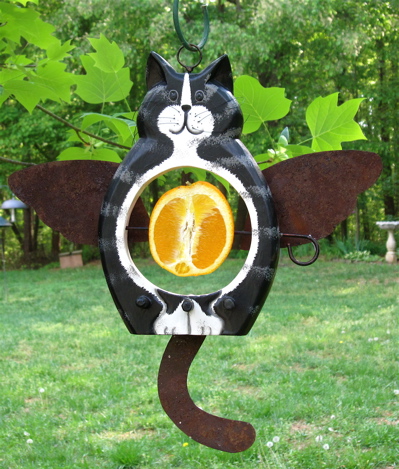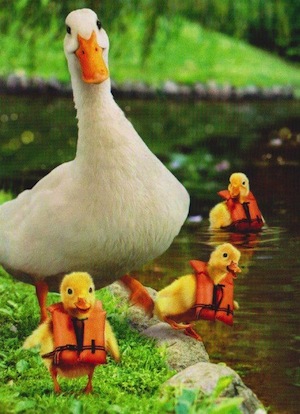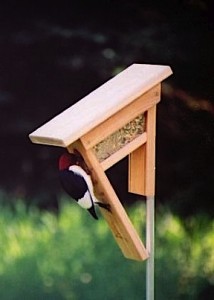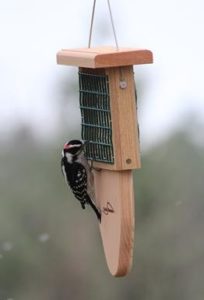-
do fruit in wild bird feeders for summer season!
The best of summer… when everything seems bolder and more alive. Gardens pop with vivid color, and many birds’ plumage is at its brightest before molting. Colorful fruits are also a great idea for wild bird feeders! Migratory birds (as well as a few residents) enjoy various fruits as part of their healthy diet too 🙂
Adding a new dimension to feeding wild birds, fresh fruit offers great variety for many species, there’s just so much more than plain old birdseed. Staked, platform and open dish feeders accommodate many types of foods – allowing you to change things up with seasons. Got a suet feeder? Simply try orange slices for orioles, woodpeckers, cat birds and others.
Some staked and dish feeders are far from boring, fun designs to add a splash of color, or even bring a smile to say any cat enthusiast! With these wild bird feeders, suet is perfect for winter feeding too, and there’s lots of recipes online (and on our site) to make your own. Large formed balls work best on the pin, and by mixing a big batch, it’ can be stored in the freezer for ease of use.
Because variety is the spice of life, mix it up for your feathered friend this summer! You never know who may stop by, and after all, you can always revert to boring birdseed in your feeders!
-
To all the moms out there protecting babies and hogging wild bird feeders…
We Wish You a Very Happy Mother’s Day!
Whether they’re 2, 12, or 22, they’ll always be your babies, and we salute all Moms today!
It’s the innate characteristic of a mom… be she two-legged, four-legged, feathered, furred or finned. To protect her young, nurture and raise them to the best of her ability.
In the feathered sense, moms have been flat out obnoxious around feeders lately (dads too for that matter). The timid chickadee and titmouse who usually grab one worm and politely fly off, have been stuffing their beaks with as many worms as possible. Some fall to the ground but never go to waste as a few robins have learned this is a most popular hangout – below the mealworm feeder.
Frenzied feeding is in effect as nesting season is in full force. Babies, babies everywhere, and frantic parents are constantly hoarding wild bird feeders. Waiting almost until dusk, when just a few cardinals are left feeding, I sneak to the mealworm for Mrs. Phoebe. She doesn’t stand a chance with all those titmice and chickadees. Like a crazy person in the morning when starlings are spotted (one gulp and ALL the worms are gone) I go running outside, as tapping, no banging on the window no longer works. They try and shove their heads inside the bluebird feeder! Migratory visitors like cat birds and thrashers are even bigger pigs!! Bluebirds (with 5 nestlings) would rather not use their enclosed feeder, but they may learn to like it real soon!
Hey Dr. Seuss: usually timid now birds so bold – the bigger the beak the more it will hold 🙂
-
Hearts for Valentine’s and wild bird feeders
Hearts aren’t just for Valentine’s day!
Feeding sunflower hearts or a no-waste mix greatly reduces ground mess below your bird feeders. Some home owners have backed off from feeding birds, as the ground waste may have attracted other, less desirable critters (especially if the house sat in close proximity to a wooded area). But there are lots of ways to still feed birds… without the mess!
The no-waste mixes and sunflower hearts & chips are a perfect choice for most types of wild bird feeders as a great variety of species enjoy these premium seeds. They may cost a little more, but it’s money well spent if you’d still like to see those beaked buddies in your yard, sans the ground mess. Anything that does fall to the ground will not be left for long, as ground feeding birds who eat seeds (like cardinals, doves, juncos, chipping sparrows, towhees) will snatch this premium meal up before it has time to sit.
Using a seed tray or seed catcher will also help to eliminate ground mess. The adjustable trays actually serve as an additional feeder with their large platform area. Today’s seed catchers need not attach directly to the bottom of the bird feeder either. Hanging trays offer several installation options, and larger platforms are made to fit on feeder poles or 4×4 posts below the feeder. Birds who’ve never used the feeder itself will utilize the platform for a meal of fallen seed.
Suet is another great way to feed birds sans any ground waste. It’s neat & clean,
economical and easy to feed. Clinging birds like chickadees, nuthatches and titmice like it, and you can’t beat it for cold weather feeding! Packed with fat and protein, suet provides those extra calories for energy needed to stay warm. Standard suet cages are great, but a suet cage with tail prop will entice woodpeckers too. The extended panel below the cage gives them leverage to “prop” their tail and perch more comfortably. Guess it’s the difference between a metal folding chair and a Lazy-Boy!
Wild bird feeders come in a gazillion style colors! First step is to figure out what birds you’d like to attract. Specialty feeders exist for everyone… from hummingbirds and bluebirds, to Goldfinches and Orioles. Of course fresh water is always an excellent method to entice birds, and some form of birdbath (even a saucer) should always be considered in any bird-friendly habitat.

